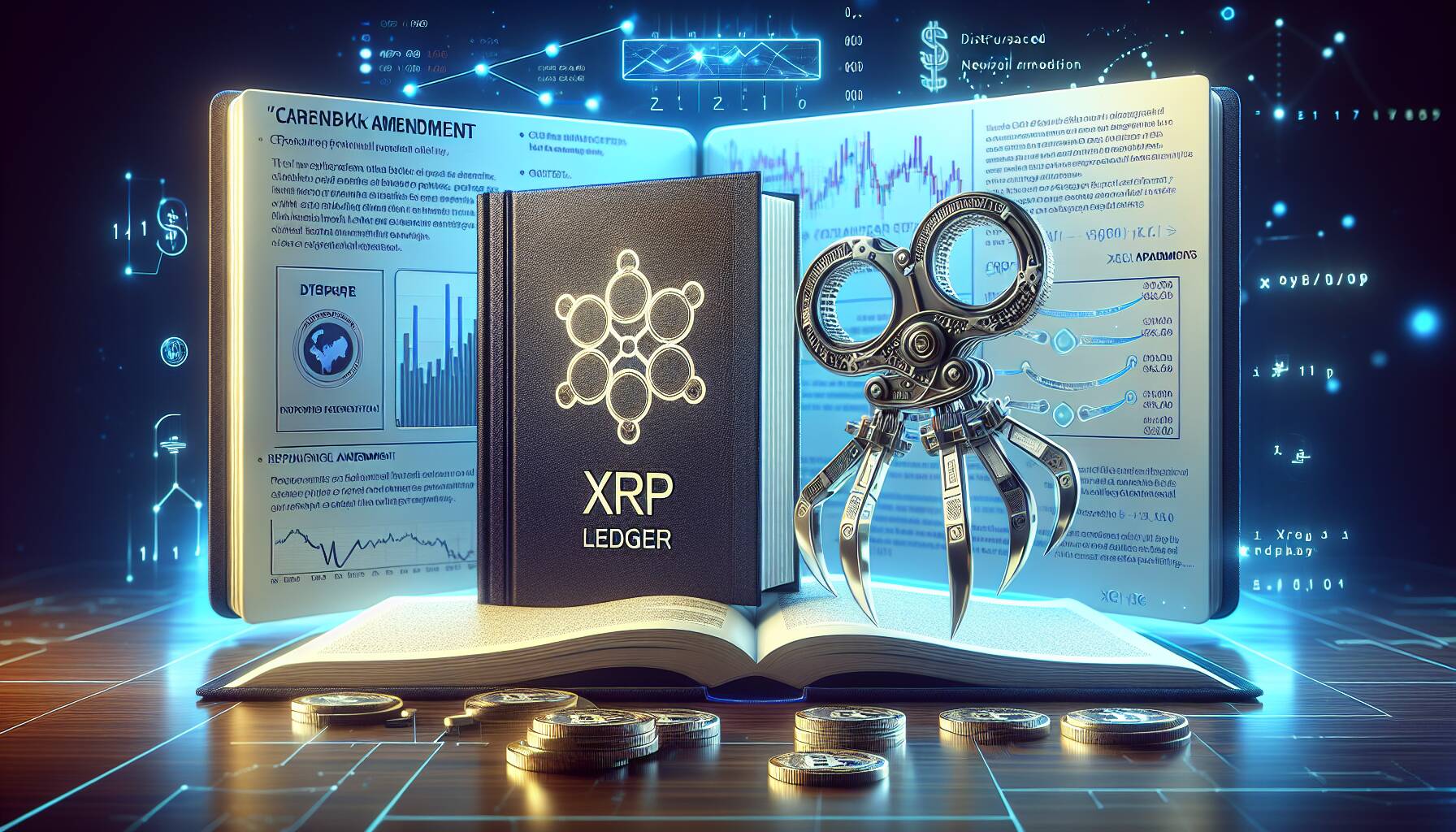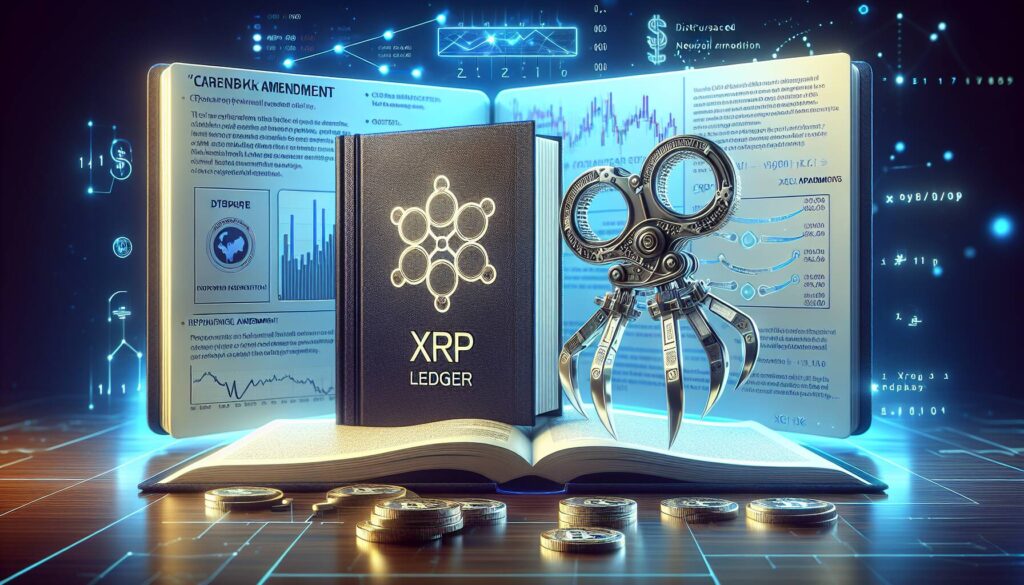In a notable development for the cryptocurrency world, the XRP Ledger has implemented a new clawback amendment, a decision backed by over 90% of validator votes. This amendment introduces Ripple’s dollar-pegged stablecoin, RLUSD, as a clawback token, allowing it to be traded directly on the XRP Ledger’s decentralized exchange (DEX). This enhancement aims to boost liquidity and trading options within the ecosystem, potentially invigorating decentralized finance (DeFi) activities on the ledger.
“Clawback” tokens come with a unique feature that allows their issuers to reclaim funds from users’ wallets under specific circumstances, primarily to ensure regulatory compliance or recover assets in cases of fraud and misdirection.
The update to the XRP Ledger also aims to improve the regulatory standing of its Automated Market Maker (AMM) pools. This means that tokens equipped with clawback capabilities can now be utilized within these liquidity pools, fostering a safer trading environment. Alongside this, modifications to the “AMMDeposit” transaction type have been introduced, which prevent the insertion of frozen tokens into the AMM, thereby enhancing security measures.
For context, the XRP Ledger houses a sophisticated DEX that enables users to swap various tokens effortlessly. The AMM model operates on a liquidity pool basis rather than relying on conventional order books, allowing for more dynamic trading practices. Since the implementation of the AMM functionality back in March 2024, the platform has processed over billion in swap volumes, with January emerging as a particularly robust month where trades exceeded 0 million.

XRP Ledger Clawback Amendment Overview
The recent clawback amendment on the XRP Ledger signifies several important updates that may impact users and stakeholders in the cryptocurrency space.
- Validator Support:
The amendment received over 90% support from validators, indicating strong community consensus.
- Introduction of RLUSD:
Ripple’s dollar-pegged stablecoin, RLUSD, can now be floated and directly exchanged on XRP Ledger’s DEX, enhancing liquidity.
- Clawback Feature:
This feature allows issuers to reclaim tokens under specific conditions, promoting compliance and security.
- Regulatory Compliance:
The update improves regulatory compliance for the XRP Ledger’s Automated Market Maker (AMM) pools.
- AMM Functionality:
Recent modifications prevent the deposit of frozen tokens into the AMM, thus safeguarding liquidity.
- Trading Activity Surge:
Since the amendment, over billion in swap volumes have been processed, demonstrating increased trading activity.
- Significant Monthly Trading Metrics:
January alone saw over 0 million in trades, marking a standout month for the DEX.
These developments could enhance user confidence and engagement in decentralized finance (DeFi) activities, allowing individuals to trade more securely and efficiently while potentially increasing overall market participation on the XRP Ledger.
Ripple’s Clawback Amendment: A Game Changer for XRP Ledger’s DeFi Landscape
The recent deployment of the clawback amendment on the XRP Ledger marks a significant milestone in the evolution of decentralized finance within this blockchain ecosystem. This enhancement, backed by a strong validator vote exceeding 90% approval, paves the way for Ripple’s RLUSD stablecoin to engage in seamless transactions on the XRP Ledger’s decentralized exchange (DEX). Such innovations not only promise to elevate liquidity but also foster a more versatile trading environment, posing interesting dynamics within the burgeoning DeFi space.
When we compare this development to other blockchain platforms like Ethereum or Binance Smart Chain, we observe distinct competitive advantages and disadvantages. The liquidity boost from this update enhances XRP Ledger’s attractiveness relative to competitors. For instance, while Ethereum has been the dominant player in DeFi with its expansive ecosystem, the high gas fees and slower transaction speeds often hinder user experience. Ripple’s introduction of clawback tokens reduces potential regulatory concerns, creating a safer trading environment for institutional investors wary of compliance risks. However, this very feature could dissuade users who prioritize privacy and autonomy, as the capability for an issuer to reclaim tokens introduces a layer of control that runs counter to DeFi’s ethos of decentralization.
This amendment stands to benefit a diverse range of stakeholders, particularly institutional investors and compliance-driven projects looking for a reliable platform to conduct trades without regulatory grey areas. Conversely, it could present challenges for privacy-focused individuals and projects that may view the clawback mechanism as an infringement on user freedom. The balancing act between regulatory compliance and user autonomy remains a pivotal consideration for XRP and undoubtedly shapes its positioning in the competitive arena of blockchain innovation.
The updates made with the clawback amendment, especially regarding AMM pools, reflect a proactive approach to enhancing user experience while addressing regulatory hurdles. As ripple effects from this development reverberate through the crypto community, XRP Ledger is poised to redefine implications for decentralized finances, creating a ripple effect (pun intended) that could see ripple effects through other ledgers and DeFi projects adjusting strategy to keep pace with these significant changes.

















